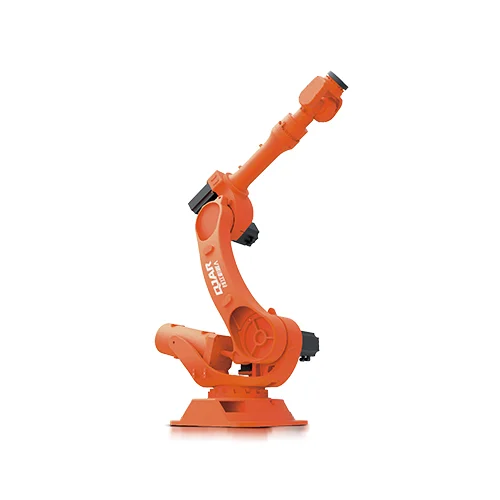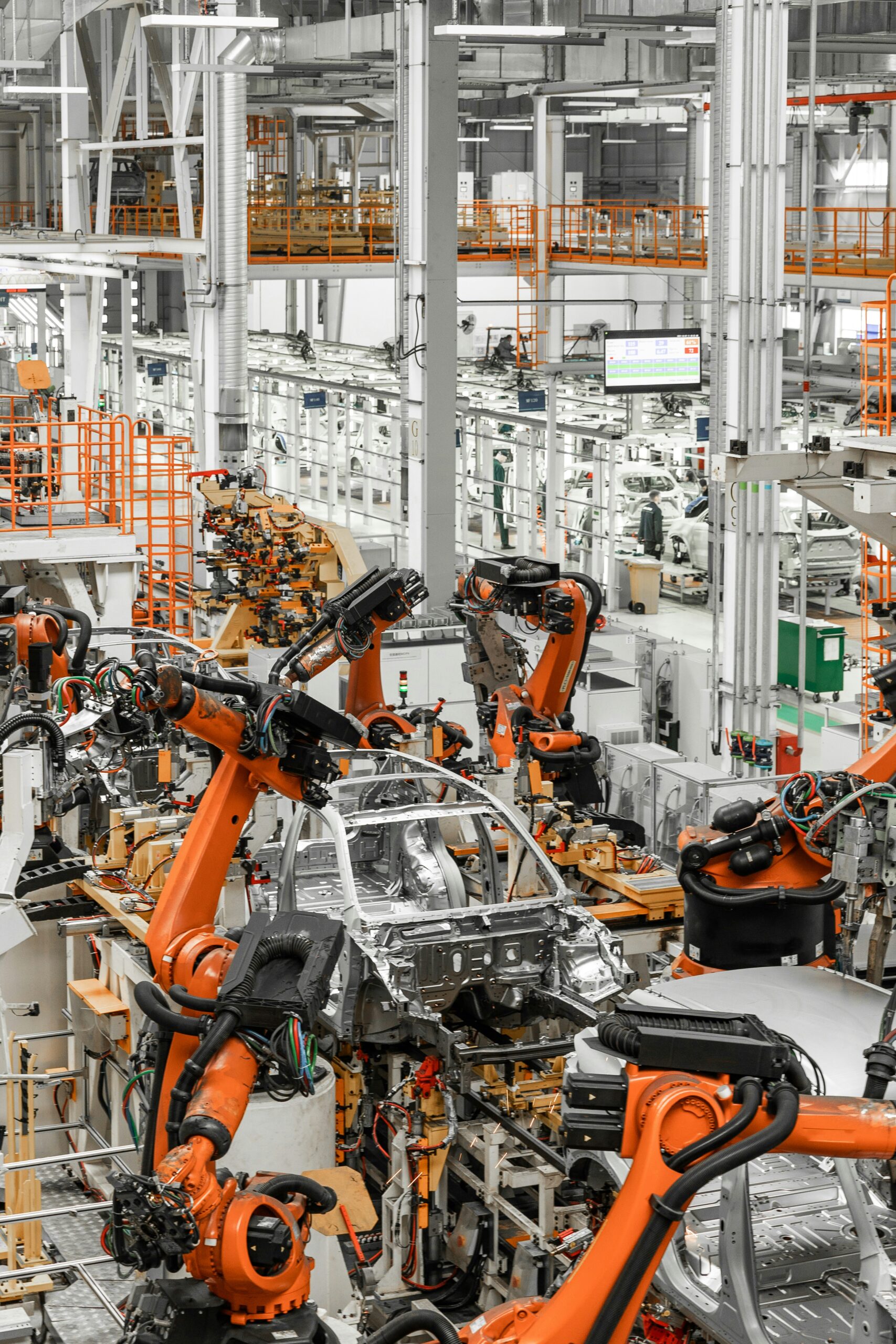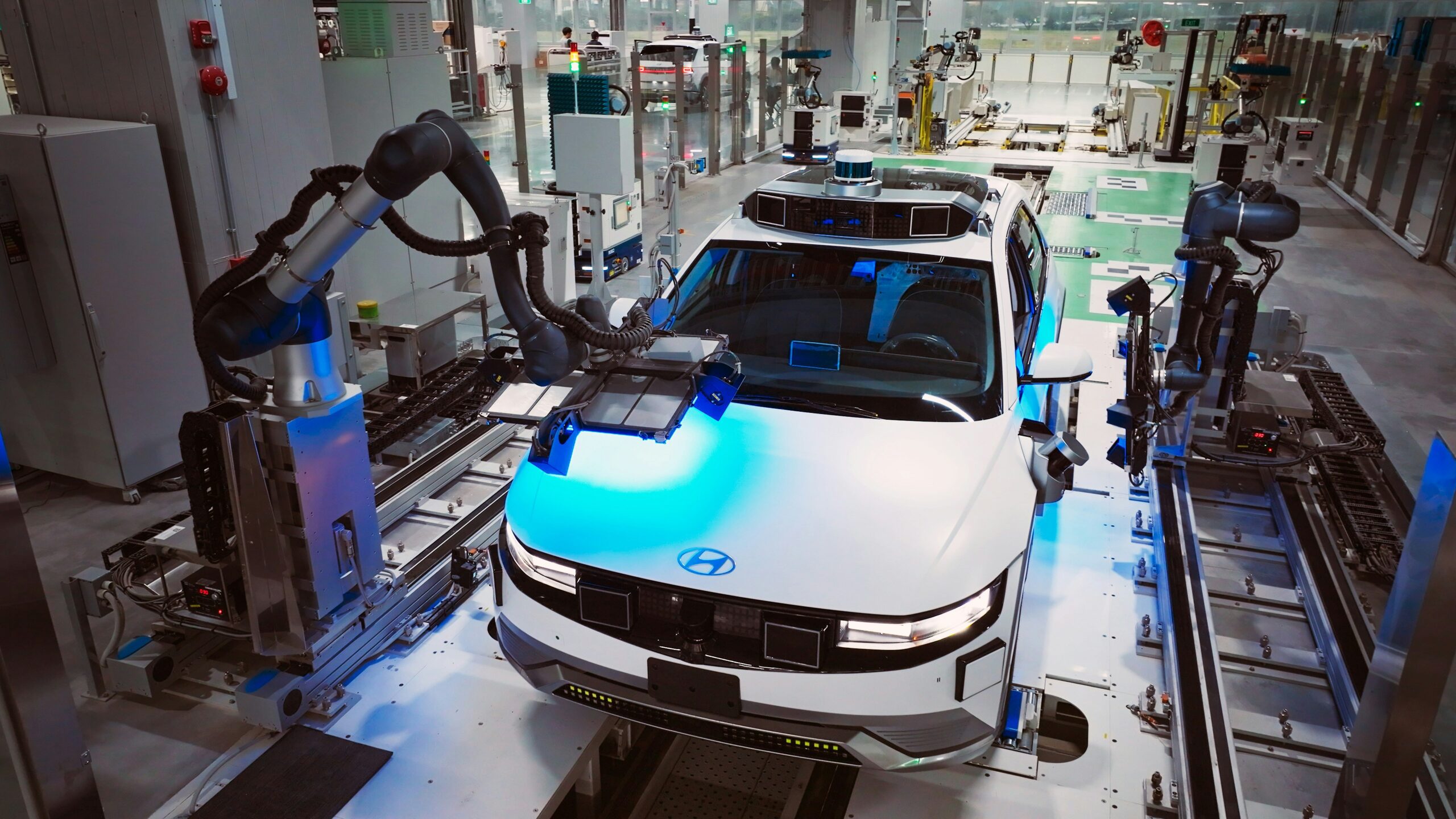Introduction
The deployment of robotics in manufacturing has revolutionized the industry by achieving previously unimaginable levels of efficiency, accuracy, and productivity. While assembly robots are among the numerous types of robots employed in manufacturing, they are indispensable for streamlining procedures and enhancing the quality of output. These robots are made to complete difficult jobs accurately, which greatly lowers human error and speeds up production. The 210kg Payload 2688mm Reaching Distance Robotic Arm QJR210-1 is one such noteworthy product that is well-known for its small size and wide range of uses. The influence of assembly robots and how robotics in manufacturing is raising productivity to all-time highs are discussed in this article.
The Development of Manufacturing Robotics
In the mid-1900s, the introduction of the first industrial robots sparked a growth in robotics in manufacturing. These early robots were primarily employed for basic, repetitive duties, such as welding and material handling. Because of technological advancements over the years, these machines now possess a significantly greater range of capabilities, as well as a greater capacity for intelligence and adaptability.
In the 2010s, the history of factory robotics underwent significant turning points with the introduction of collaborative robots, or cobots, the integration of computer control systems in the 1970s, and the development of programmable robots in the 1960s. Logistics, quality control, and assembly are among the numerous applications in which robotics is currently employed in the manufacturing sector.
Manufacturers are allowed to transition from manual to automated operations as robotics technology is perpetually evolving. As an outcome, there have been substantial enhancements in productivity, efficiency, and product quality. In order to improve the capabilities of these robots, artificial intelligence and machine learning are integrated to facilitate the acquisition of new skills and the adaptation to a diverse array of tasks.

Comprehending Assembly Robots
Specialized robots called assembly robots are made to carry out different assembly jobs in the industrial industry. These robots can perform complex assembly operations with great precision because they have flexible end-effectors, accurate control systems, and modern sensors. Assembly robots are mostly used for connecting parts, inserting parts, tightening screws, and quality assurance.
There are several advantages to utilizing assembly robots in production. They increase productivity by working quickly and completing monotonous activities repeatedly and without getting tired. Furthermore, assembly robots lower human error, guaranteeing that every product fulfills exacting quality requirements. By assuming risky jobs that may endanger human workers, they also increase workplace safety.
The QJR210-1 robotic arm is one device that exemplifies the possibilities of assembly robots. This robot is ideal for a variety of tasks, such as welding, palletizing, loading and unloading, handling, polishing, and assembly, thanks to its extremely small size, spacious workspace, and quick speed of operation. With a 2688mm reaching distance and a 210kg payload capacity, the QJR210-1 is a strong and adaptable tool in contemporary production.
A Comprehensive Synopsis of the QJR210-1 Assembly Robot
The QJR210-1 assembly robot is designed to operate very well in a range of production settings. Its big workspace and rapid operating speed allow it to accomplish a wide range of jobs with ease, and its very compact design lets it to function efficiently in restricted locations. Because of its high repeat placement accuracy, the robot is less likely to make mistakes or develop flaws because it consistently completes tasks with precision.
Because of its extremely adaptable architecture, the QJR210-1 may be used for a variety of tasks beyond assembly. These include tasks like welding, where accuracy and precision are crucial, palletizing, which calls for speed and accuracy, loading and unloading, which calls for dependability and efficiency, handling operations, which profit from the robot’s flexibility, and polishing and grinding, which calls for consistent quality.
In conclusion, the QJR210-1 assembly robot provides producers with a dependable and effective solution for a variety of jobs, demonstrating the sophisticated capabilities of contemporary industrial robots.

Utilizing Assembly Robots in Production
Assembly robots are essential to many production processes, improving productivity, accuracy, and efficiency in a variety of industries. The following are some important manufacturing uses for assembly robots:
Fusion
Assembly robots have completely changed production lines in the welding industry by offering unprecedented uniformity and accuracy. These robots are capable of precisely completing intricate welding jobs, producing strong and dependable welds. The QJR210-1 is especially useful in welding applications because of its strong design and excellent repeat positioning accuracy, which lowers the possibility of errors and boosts overall productivity.
Robots that do palletizing assembly activities, where precision and speed are critical, perform exceptionally well. Product stacking on pallets may be done swiftly and effectively by these robots, which maximizes space and assures stability. The QJR210-1 is perfect for palletizing operations because of its big area and rapid operating speed, which drastically cut down on the amount of time needed for hand stacking and minimize mistakes.
Putting in and Taking Out
Heavy lifting and repeated motions are common in loading and unloading jobs in manufacturing, which can be dangerous for human workers. These jobs can be completed by assembly robots, increasing productivity and safety. Because of its large payload capacity and adaptable design, the QJR210-1 can handle a variety of loading and unloading tasks, which helps to streamline production lines and lowers the danger of workplace accidents.

Managing
Another area where assembly robots excel is material management. These robots contribute to the efficient movement of products through the manufacturing line by their capacity to move materials rapidly and precisely. The QJR210-1 is an excellent option for managing duties, reducing interruptions, and increasing overall productivity due to its high speed and versatility.
Grinding and polishing
Assembly robots are vital in sectors where surface finish quality is crucial. They are able to grind and polish with steady pressure and accuracy, guaranteeing consistent outcomes. For these applications, the QJR210-1’s strong design and high repetition positioning accuracy make it the perfect choice since it produces high-quality finishes and minimizes the need for rework.
Putting together
Assembly work is the main duty of assembly robots, and they do it quickly and precisely. These robots are able to assemble parts, insert components, tighten screws, and carry out quality inspections to guarantee that every product satisfies the necessary requirements. Because of its sophisticated features and adaptable design, the QJR210-1 is a great option for assembly operations, accelerating output and lowering errors.
Examples of Case Studies: Assembly Robots’ Effect on Productivity: Automotive Sector
The use of assembly robots in the automobile sector has greatly increased output and quality. For example, a well-known automaker automated the welding and assembly operations by implementing the QJR210-1 robotic arm. A 25% decrease in errors and a 30% improvement in production speed were the outcomes of this integration. Each vehicle fulfilled high standards because to the accuracy and uniformity of the robots, which decreased the need for rework and increased overall efficiency.
Example 2: Production of Electronics
Assembly robots have shown to be quite useful in the electronics manufacturing industry, where accuracy is crucial. The QJR210-1 was used by a well-known electronics manufacturer to assemble fragile components. Due to the robot’s high repeat placement accuracy and adaptability, manufacturing productivity was increased by 20% and assembly mistakes were significantly decreased, as it was able to perform a variety of tasks with ease.
Example 3: Manufacturing of Consumer Goods
Assembly robots have simplified manufacturing lines and raised product quality in the consumer products industry. The QJR210-1 was included by a well-known consumer products firm into their assembly process to automate handling and palletizing duties. As a consequence of this integration, labor expenses decreased by 15% and production capacity increased by 35%. The strict quality requirements of each product were guaranteed to be met due to the robots’ ability to complete repetitive tasks with precision and consistency.
Prospects for Manufacturing Robotics in the Future
With a number of new developments poised to significantly advance the capabilities of assembly robots and other industrial robots, the future of robotics in manufacturing is bright. Among these tendencies are:
Sophisticated Machine Learning and Artificial Intelligence
The integration of artificial intelligence (AI) and machine learning into robotics is expected to result in a significant transformation of manufacturing processes. AI-capable robots have the potential to enhance output and efficiency by anticipating maintenance needs, managing production schedules, and learning and adapting to new responsibilities.
Cobots, or collaborative robots
Cobots, or collaborative robots, are made to operate alongside human operators, fusing human workers’ adaptability with robotic accuracy. By helping with jobs that need for human dexterity and judgment, these robots can increase efficiency and safety in the workplace.

Improved Integration Methods
Manufacturers will be able to effortlessly integrate several robot types—such as assembly robots and SCARA robots—into a single automated system thanks to future developments in integration techniques. This will improve efficiency and further streamline the production process.
Internet of Things and Networking
The Internet of Things (IoT) and advanced connectivity technologies will enable robots to communicate and collaborate in real-time with other devices and systems. By using a networked approach, industrial processes will become more intelligent and productive, reducing downtime and increasing overall production.
Robot-Human Interaction
Technological developments in human-robot interaction will facilitate the programming and control of robots by operators, lowering the adoption rate’s learning curve. Manufacturers will be able to incorporate robots into their production lines more rapidly because to user-friendly interfaces and simple control systems.
In summary
The use of assembly robots and other robotics in manufacturing has had a revolutionary effect. These robots are essential to contemporary production because they increase output, boost product quality, and save operating expenses. The QJR210-1 assembly robot is a prime example of the sophisticated capabilities that industrial robots have to offer, providing a flexible and effective solution for a range of applications. The application of robotics in manufacturing will spur more technological developments as the field progresses, opening the door to a new era of productivity and automation.

 Arabic
Arabic Bulgarian
Bulgarian Czech
Czech Dutch
Dutch English
English Finnish
Finnish French
French Georgian
Georgian German
German Greek
Greek Hungarian
Hungarian Italian
Italian Japanese
Japanese Korean
Korean Lithuanian
Lithuanian Myanmar (Burmese)
Myanmar (Burmese) Persian
Persian Polish
Polish Portuguese
Portuguese Romanian
Romanian Russian
Russian Serbian
Serbian Slovak
Slovak Spanish
Spanish Swedish
Swedish Thai
Thai Turkish
Turkish Ukrainian
Ukrainian Vietnamese
Vietnamese